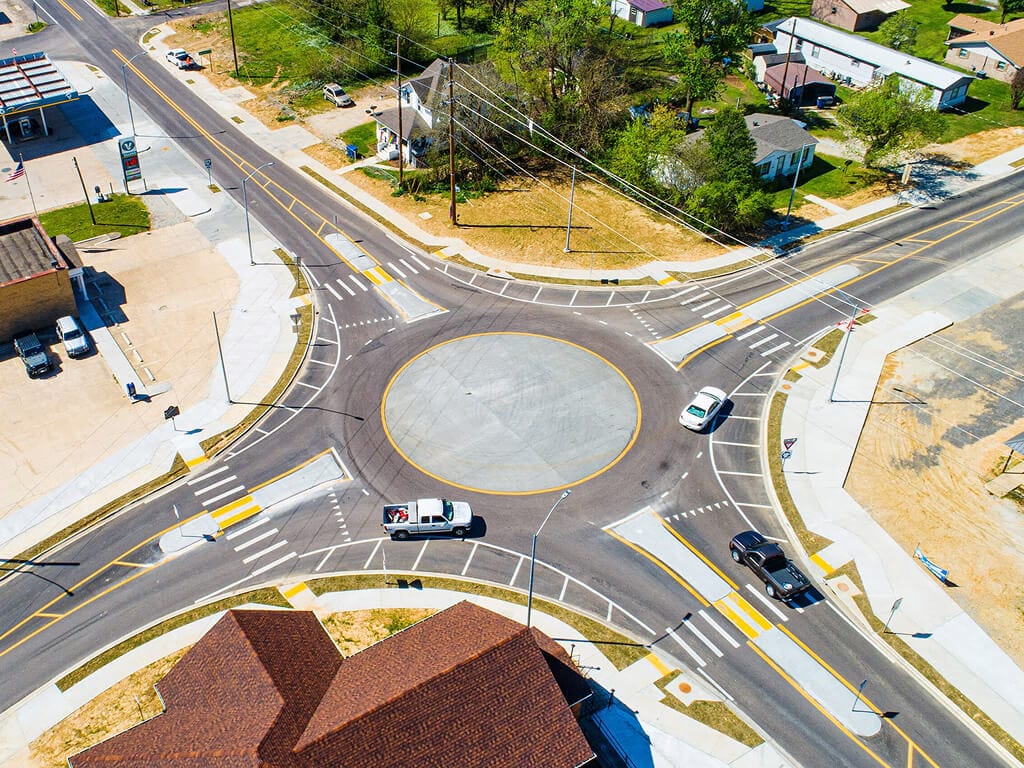Conway’s Roundabouts Are Guiding Traffic Policy in Arkansas
Discover how Conway, Arkansas, became a leader in roundabout adoption with 36 intersections improving traffic safety, reducing crashes, and saving costs.

Roundabouts have long been met with skepticism. Many people question whether these circular intersections are a wise use of public money and land, and community resistance can be strong, with residents often uncertain about how they operate. Yet research points in a different direction: roundabouts improve safety and traffic movement by slowing cars and reducing the constant stop-and-go pattern of traditional intersections.
The Florida Department of Transportation reports that roundabouts cut fatalities by 90 percent and injuries by 75 percent when compared with standard intersections. They also expand traffic capacity by 30 to 50 percent, shorten delays, lower fuel consumption, and boost overall roadway efficiency. Beyond their function, many roundabouts also enhance the look of surrounding neighborhoods, offering both safety and visual appeal.
Conway Leading the Way
In Arkansas, Conway has become a leader in the use of roundabouts. Over the past twenty years, the city has built 36 of them, the most of any community in the state. Notably, none of these intersections has been the site of a fatal crash or serious injury. City officials now promote roundabouts as safer, more efficient, and more cost effective than traditional intersections, urging other Arkansas communities to consider the same approach.
Ellen Coulter, spokesperson for the Arkansas Department of Transportation, said roundabouts improve safety by reducing conflict points and encouraging drivers to slow down. Bobby Kelly, Communications Coordinator for the city of Conway, noted that the city has saved thousands of dollars, and over time even hundreds of thousands, by relying on roundabouts. While some funding still supports traditional intersections, the broader shift has freed resources for other infrastructure needs, giving engineers and technicians the ability to focus on additional priorities.
Roundabouts Continue to Gain Ground
Conway’s success has caught the attention of communities across Arkansas. Cities like Rogers have started building roundabouts, looking to Conway as a model for safe and efficient traffic design. Local leaders point to Conway’s track record as proof that these circular intersections are a lasting investment in both safety and public resources.
Nationally, the Federal Highway Administration promotes roundabouts as an effective way to improve traffic flow and reduce crashes. Modern roundabouts began appearing in the United States in the 1990s, following years of advocacy and public outreach led by engineers Frank Blackmore and Leif Ourston. Their mission was to introduce to American roads the safety and efficiency benefits already well established abroad.
At first, roundabouts faced skepticism. Some residents considered them confusing, and even a few law enforcement officials expressed doubts. Over time, however, attitudes shifted. By 2022, the country had an estimated 8,800 roundabouts in operation, a sign of their growing acceptance nationwide.
The Road Forward
In Conway, the momentum continues to build. Two more roundabouts are scheduled for construction this year, with additional projects already on the horizon. The city’s record of safety and efficiency is inspiring other Arkansas communities to explore circular intersections, gradually transforming early skepticism into broad acceptance.





